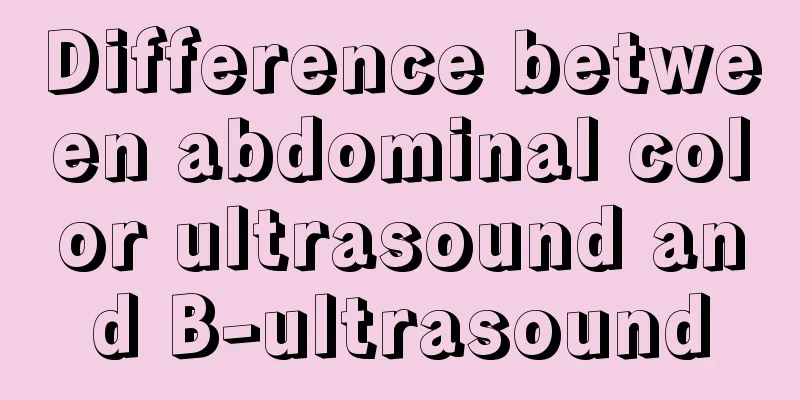Treatment of sequelae of lumbar disc herniation surgery

|
In daily life, many friends who have undergone surgery may suffer from sequelae if they are not careful in their care. Everyone must take precautions in time. The following article today will introduce the sequelae of lumbar disc herniation surgery. Let's popularize some prevention knowledge for all of you. Although surgical treatment of lumbar disc herniation and lumbar spinal stenosis can achieve immediate results, the long-term effects are far from satisfactory. Common complications after surgery include: (1) Infection. It is a common complication after lumbar surgery. Experts say that surgical incision infection and intervertebral disc infection may occur after surgery. The main symptoms are: the original neuralgia and low back and leg pain symptoms disappear, and after 5 to 14 days, severe low back pain occurs accompanied by cramps in the buttocks or lower abdomen and muscle spasms, making it impossible to turn over and causing great pain. (2) Nerve damage. Clinically, there are many postoperative complications. Experts say that nerve roots can be damaged during surgery, either epidural or intradural. (3) Damage to large blood vessels. The most common cause is injury to large blood vessels in the posterior abdominal wall during posterior approach surgery. (4) Adhesion and scar. Adhesions and scars often occur between the nerve roots at the surgical site and the exposed part of the dura mater after laminectomy, which may cause low back pain or radiating nerve root pain. Scar tissue proliferation and adhesion at the bone defect of the posterior wall of the spinal canal lead to restenosis after surgery; hematoma organization, adhesion and calcification often lead to restenosis of the nerve root canal again. (5) Spinal instability. For some patients, leg pain disappears after surgery but back pain persists. (6) Organ damage. Vascular damage may be accompanied by damage to other organs, such as the bladder, ureters, or small intestine. (7) Cerebrospinal fluid fistula or meningeal pseudocyst. Cerebrospinal fluid fistula usually occurs 3 to 4 days after surgery; dural pseudocyst usually causes low back and leg pain within a few months after surgery, with spherical cyst-like objects adhering to the dura mater at the surgical scar or in the lumbar sacral region. Compression of a cystic mass can cause sciatica. Reply to question after lumbar spine surgery: Orthopedic experts said that the time it takes to get out of bed and resume work after surgery for lumbar disc herniation depends on factors such as the type of disc herniation, the patient's age, and the surgical method. Secondly, the concepts of supporting patients to get out of bed and stand up and allowing patients to move freely out of bed are different. Now that we know about the sequelae of lumbar disc herniation surgery, we must be careful to prevent them in our daily lives. Lumbar disc herniation is a disease caused by long-term damage to the waist or pressure. It is recommended that you avoid it in your daily life. Massage your waist appropriately and do not let your waist be under pressure for a long time. |
<<: The dangers of scrotal capillary hemangioma
>>: Prevention of gum recession and exposed tooth roots
Recommend
The advantages and disadvantages of abdominal scraping
Gua Sha is a commonly used treatment method in th...
What to do about bad breath caused by poor digestion
Bad breath is very annoying to many people, and i...
Benefits of pigeon soup
Although pigeons represent peace in the world, fo...
What is the difference between bile duct cancer and liver cancer
What is the difference between bile duct cancer a...
What causes endometrial cancer? These aspects need attention
Endometrial cancer is a disease that occurs durin...
What are the symptoms of reversible pulpitis?
The common symptoms of reversible pulpitis includ...
What to do if the swallowing nerve is damaged
Our nerves control the movement of the muscles in...
Brown patches on skin
Skin disease is a very common disease. It often o...
Signs of a bad relationship between husband and wife
Some people say that marriage is the grave of lov...
Which hospital is best for treating nasopharyngeal cancer
Because nasopharyngeal cancer takes a very long t...
What are the dietary taboos for patients with cerebral thrombosis?
Cerebral thrombosis is becoming more and more com...
What to do if your head hurts due to wind?
It is common for the body to be affected by wind ...
How to detect cervical cancer early
How to detect cervical cancer early? 1. Early sta...
What is the reason for dry cough with white sputum
Many diseases are very common in people's dai...
What are the differences between meningococcal meningitis and Japanese encephalitis?
Meningococcal meningitis and Japanese encephaliti...









